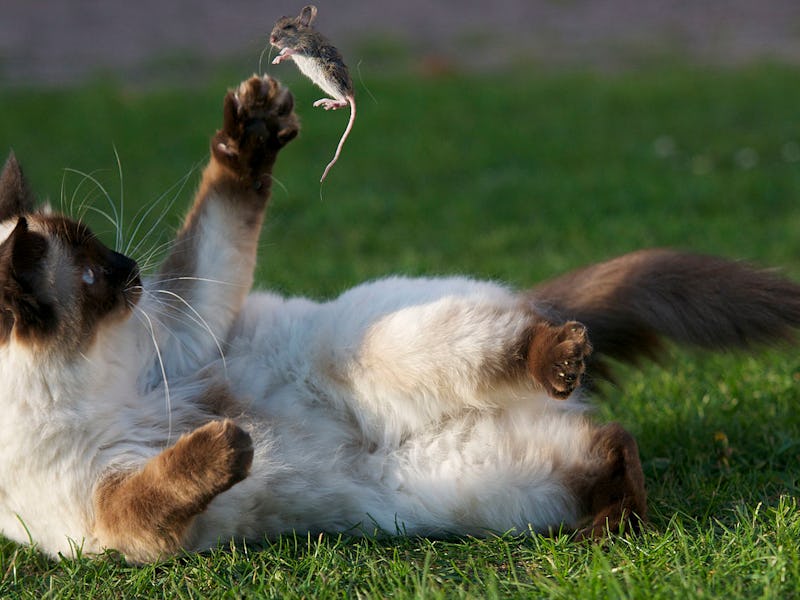Cats Are an Ecological Nightmare and Ruining the Environment
Sure, they're cute, but they're one of the world's top invasive species.

House cats are an absolute ecological nightmare, implicated in the extinction of dozens of species, and posing a grave threat to many more.
But let’s not blame climate change on cats. They’re only follow their predatory instincts; ultimately the fault is with you. Your love of felines opens the door for these hypercarnivores to invade new environments and catch unsuspecting creatures unaware.
Abigail Tucker traces the spread of the common house cat, Felis catus, around the world in her new book, The Lion in the Living Room: How House Cats Tamed Us and Took Over the World. It’s about the surprising ways these wild creatures have wormed their way into our homes and hearts, all while refusing to bow to domestication.
Part of the saga is a story of colonization and destruction: Cats have been named among the world’s top 100 most destructive invasive species. One study in Nature Communications estimates that cats kill between 1.3 and four billion birds, and 6.3 to 22.3 billion mammals every year.
Cats are most famously deadly to local birds.
Island ecosystems, which tend to have species that are both rare and vulnerable, are particularly sensitive to feline invaders. By one count, cats are directly implicated in 14 percent of extinctions of reptiles, birds, and mammals on islands. They are the primary threat to eight percent of critically endangered reptile, bird, and mammal species.
Of course, ultimate responsibility for the feline catastrophe rests with humans. Like the vast majority of invasive species, cats have spread around the globe as either hitchhikers or invited guests on a Homo sapiens itinerary.
Cats are dangerous as an invasive species in ways that most others are not. It’s not just the fact of introducing a new alpha predator into an area, it’s that humans continue to treat them as treasured companions once they get there.
In the wild, cat populations are limited by availability of hunting territory. In cities, house cats feed on Fancy Feast and feral cats feed on human food waste. The abundance of food means numbers can spike well above what the availability of prey in the environment would normally allow, but it doesn’t dull the predator instinct or taste for warm blood.
When feral cat populations get out of control — and they do — humans have very peculiar ways of dealing with the problem. The favored method among cat lovers is TNR — trap, neuter, release (TNR). It sounds great, except that sterilized cats will continue to wreak havoc on environments until they die, and they tend to live longer than their fertile brethren. To make matters worse, studies have shown that TNR does little to reduce overall numbers of feral cats in a given colony — it’s all but impossible to get to all the cats, and the ones left uncaught seem to do enough breeding for the whole lot.
Killing cats, strangely, doesn’t seem to work that much better. Not only is the nuclear option a political nightmare, it fails to reduce numbers significantly over the longer term, again because it’s so hard to root out all the offending animals.
The best solution might be to treat pets like pets, and feral cats like wild animals. Keeping house cats inside prevents them from harming other creatures, with the exception of mice and rats, which — by all means. Feral cat colonies would be far less of a problem if they didn’t have access to human food sources.
Of course, unlike other domesticated animals, the boundary between wild and tame remains cloudy for cats. Most house pets will get along just fine out there in the real world, and it’s just as easy for a stray to get itself adopted by meowing under the right windowsill.
For better or for worse, humans are blinded by love for these strange creatures. Those under their spell would sooner sacrifice all the birds in the trees than deny their pet the chance to explore its predatory instinct. And who among us could turn away a scrawny feline with a persistent mewl?